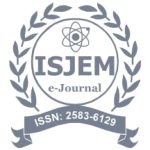BI-DIRECTIONAL GRAPH CONVOLUTIONAL NETWORKS FOR MISLEADING INFORMATION ON INTERNET
- Version
- Download 66
- File Size 288.49 KB
- File Count 1
- Create Date 23 April 2025
- Last Updated 23 April 2025
BI-DIRECTIONAL GRAPH CONVOLUTIONAL NETWORKS FOR MISLEADING INFORMATION ON INTERNET
Mrs. K. Swetha Sailaja Kuruva Bhargav, Ganji Vamshi,
Assistant Professor Student Student
Department of CSE (AI & ML)
ACE Engineering College
Ankushapur, Ghatkesar Mandal, Telangana – 501301, India
ABSTRACT: Bi-directional Graph Convolutional Networks (Bi-GCN) have emerged as an effective approach for detecting and mitigating the spread of misleading information on the internet. In this research, we propose a novel framework that utilizes the power of bi-directional graph convolutional networks to model the propagation patterns of information across social networks and online platforms. By capturing both forward and backward information flows, our Bi-GCN model offers an improved understanding of how misleading content spreads, how users interact with such content, and how they influence each other's beliefs. This dual flow mechanism enables more accurate detection of misinformation by considering both the origin and the subsequent spread of potentially harmful content, thereby addressing the inherent asymmetry in traditional information diffusion models. Furthermore, our approach integrates content analysis with network structure, leveraging both textual features and social network connectivity to enhance the robustness of misinformation detection. By applying Bi-GCN to large-scale datasets derived from social media platforms, the model is able to identify key nodes and paths that play pivotal roles in the dissemination of misleading information. The results show that our Bi-GCN framework outperforms conventional graph-based and machine learning methods, providing a more nuanced and scalable solution to combating online misinformation. Misinformation spreads rapidly through online platforms, influencing public opinion, politics, health, and economics. Traditional detection methods struggle with the complex nature of fake news propagation, making it essential to develop more advanced techniques.
Graph Convolutional Networks (GCNs) have revolutionized graph-based learning by extending deep learning to nonEuclidean data structures. However, conventional GCNs suffer from limitations such as oversmoothing, shallow neighborhood aggregation, and inefficient feature propagation. To address these challenges, Bi-Directional Graph Convolutional Networks (Bi-GCN) have emerged as an extension that enhances message passing by allowing bidirectional information flow.
Keywords: Bi-directional Graph Convolutional Networks (Bi-GCN), misleading information, misinformation detection, information propagation, social networks, content analysis, deep learning, online platforms, graph-based methods.
Download
